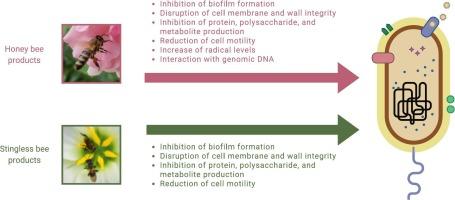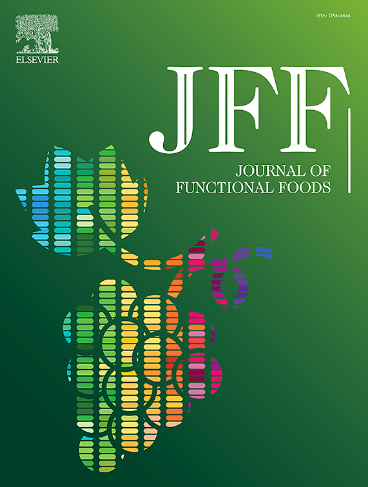Honey Bee and Stingless Bee products: Effects on microbial virulence factors and pathogenicity mechanisms
IF 4
2区 农林科学
Q2 FOOD SCIENCE & TECHNOLOGY
引用次数: 0
Abstract
Antimicrobial resistance (AMR) is an escalating global crisis. AMR is driven by the overuse and misuse of antibiotics leading to the rise of healthcare-associated infections (HAIs) worldwide. Therefore, a promising strategy to combat AMR targets virulence factors and biofilm formation by pathogens, which protect them from antibiotics and the host immune system. Quorum sensing (QS) inhibitors and biofilm formation blockers are emerging as novel therapeutic approaches. In this context, bee-derived products have demonstrated robust antimicrobial properties, particularly in combating antibiotic-resistant bacteria. Although antimicrobial activity exerted by honey bee products is well-documented, research into stingless bee products remains an underexplored field with great potential. This review for the first time provides a comparative and comprehensive update regarding the potential implementation of honey bee and stingless bee products in mitigating AMR by targeting virulence factors and pathogenicity mechanisms such as biofilms, offering valuable insights into their use as alternative or adjunctive therapies.

蜜蜂和无刺蜂产品:对微生物毒力因子和致病性机制的影响
抗菌素耐药性(AMR)是一个不断升级的全球危机。抗生素耐药性是由于抗生素的过度使用和误用导致全球卫生保健相关感染(HAIs)的增加而引起的。因此,对抗抗菌素耐药性的一个有希望的策略是针对病原体形成的毒力因子和生物膜,这些因子和生物膜保护它们免受抗生素和宿主免疫系统的侵害。群体感应(QS)抑制剂和生物膜形成阻滞剂正在成为新的治疗方法。在这种情况下,蜜蜂衍生产品已显示出强大的抗菌特性,特别是在对抗耐抗生素细菌方面。尽管蜜蜂产品的抗菌活性得到了充分的证明,但对无刺蜜蜂产品的研究仍然是一个具有巨大潜力的未充分开发的领域。这篇综述首次提供了关于蜜蜂和无刺蜂产品通过靶向毒力因子和致病机制(如生物膜)减轻AMR的潜在实施的比较和全面的更新,为它们作为替代或辅助治疗的使用提供了有价值的见解。
本文章由计算机程序翻译,如有差异,请以英文原文为准。
求助全文
约1分钟内获得全文
求助全文
来源期刊

Journal of Functional Foods
FOOD SCIENCE & TECHNOLOGY-
CiteScore
9.60
自引率
1.80%
发文量
428
审稿时长
76 days
期刊介绍:
Journal of Functional Foods continues with the same aims and scope, editorial team, submission system and rigorous peer review. We give authors the possibility to publish their top-quality papers in a well-established leading journal in the food and nutrition fields. The Journal will keep its rigorous criteria to screen high impact research addressing relevant scientific topics and performed by sound methodologies.
The Journal of Functional Foods aims to bring together the results of fundamental and applied research into healthy foods and biologically active food ingredients.
The Journal is centered in the specific area at the boundaries among food technology, nutrition and health welcoming papers having a good interdisciplinary approach. The Journal will cover the fields of plant bioactives; dietary fibre, probiotics; functional lipids; bioactive peptides; vitamins, minerals and botanicals and other dietary supplements. Nutritional and technological aspects related to the development of functional foods and beverages are of core interest to the journal. Experimental works dealing with food digestion, bioavailability of food bioactives and on the mechanisms by which foods and their components are able to modulate physiological parameters connected with disease prevention are of particular interest as well as those dealing with personalized nutrition and nutritional needs in pathological subjects.
 求助内容:
求助内容: 应助结果提醒方式:
应助结果提醒方式:


